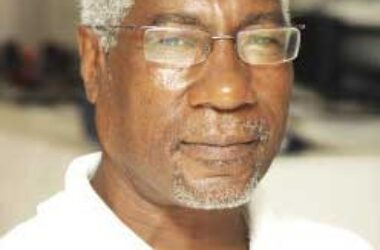 Economic development does not come easy especially when a country has no mineral resources and lacks a solid manufacturing base for export production. Over the course of time, the experiences and successes of resource-poor countries have pointed to the need for sectoral support policies that help create a network of commercial interdependence, skilfully weaving together the manufacturing, agriculture and service sectors. Although the various outcomes of many of these economic policies manifest the constant challenge of keeping unemployment low, they nonetheless predicate a change of perspective in the manner in which development should be approached. In the final analysis, adopting a lateral and creative mindset may be just as critical as the imperatives of technology and organization in the quest for prosperity and economic growth.
Economic development does not come easy especially when a country has no mineral resources and lacks a solid manufacturing base for export production. Over the course of time, the experiences and successes of resource-poor countries have pointed to the need for sectoral support policies that help create a network of commercial interdependence, skilfully weaving together the manufacturing, agriculture and service sectors. Although the various outcomes of many of these economic policies manifest the constant challenge of keeping unemployment low, they nonetheless predicate a change of perspective in the manner in which development should be approached. In the final analysis, adopting a lateral and creative mindset may be just as critical as the imperatives of technology and organization in the quest for prosperity and economic growth.
On the face of it, the tourism industry has done well in recent times and has helped keep our struggling economy somewhat afloat, as agriculture and manufacturing have declined. The World Travel and Tourism Council (WTCC) estimates that in Saint Lucia, tourism’s contribution to GDP was 65 per cent in 2014, supporting 10,000 jobs – and is forecast to rise further in 2015. Impressive you might think, but how much of that wealth trickles down from tourism to the other economic sectors? Can tourism be a real driver for recovery when the other productive sectors are not performing?
The 2014/2015 Social and Economic Review states that “the island recorded 1.034 million visitors in 2014, the highest in the history of tourist arrivals for the destination as record numbers were realized for both stay-over and yacht arrivals.” Despite this impressive result, the other economic sectors continue to be far removed from the country’s success in tourism. Today, the linkage with primary agricultural production and manufacturing remains discombobulatingly weak. Given the significant patterns of consumption and resource utilization in tourism, there is enormous potential for agriculture, agribusiness, small-scale manufacturing and the creative industries to supply the inputs needed to produce tourism and leisure services through forward, backward and horizontal linkages – resulting in greater resource efficiency and encouraging large-scale production. Further, the knowledge spillovers from linkages through the application of innovation and new technologies,will benefit small businesses and farmer co-operatives by helping reduce their production costs and increasing revenue.
Since independence, our island has struggled with problems associated with development, and these have been particularly exacerbated by the absence of an inter-sectoral growth strategy. Plenty of economic literature has been produced citing how the establishment of sustainable and beneficial linkages among the productive sectors could enable the utilisation of the ability of the tourism industry to diversify our local economy, and thereby stimulate employment through local sourcing (insourcing) and leveraging more economic activity.
The tourism industry must be viewed as both a source of income and a basis and catalyst for greater inter-sectoral development. By now, one would have thought that the island’s main source of foreign exchange earnings would be effectively linked to other parts of the economy, having replaced the agricultural sector as the economic mainstay. But unfortunately tourism is still a disjointed industry – and the nation’s economic structures are poorly designed to achieve the desired inter-sectoral synergies. The linear and short-termistmindset of economic policymakers as well as the sectoral approach to development have not worked and need to be reviewed and rethought. It is now time to adopt a non-linear approach to growth where sustainable, integrated tourism becomes a new paradigm for holistic and inclusive development in Saint Lucia.
I am thinking, by now the growth of the tourism industry should have led to the growth of agribusiness as well as the creative and cultural industries. I am at a loss for words as to why successive administrations didn’t see the bigger picture and recognize the need to vigorously implement policies and programmes to pursue true economic sustainability, especially since tourism’s potential linkage effects renders the industry a viable economic development strategy. Why haven’t we worked harder to overcome the obstacles blocking inter-sectoral linkages, since many economists believe this approach to be our sole means of long-term survival? We should have used the tourism industry – bolstered by educational and industrial linkages – as a development tool, especially as we have no real viable alternatives for economic development.
Stuart McCook, in a trenchant review of the book, Last Resorts: The Cost of Tourism in the Caribbean authored by Polly Pattulo, posits the view that what Caribbean tourism presently engenders among other industries is not “linkages” but indeed “leakages”. He poignantly states: “Two important measures of the economic effects of the tourist industry are “leakage” and “linkage.” Leakage is the proportion of import expenditures to export earnings. Many Caribbean nations import goods and services to sustain the tourist industry: the average leakage for the region is 70 percent. In some cases, such as the Bahamas, leakage is as high as 90 percent. Countries that can provide more of the goods and services locally have a much lower leakage rate: Jamaica’s leakage in 1994 was 37 percent. Linkage refers to the ways in which the tourist industry utilizes locally produced goods and services rather than importing them.”
It’s worth noting that annually more than US$2 billion is spent by CARICOM countries on food imports, although their combined population is only six million people. If ever we needed evidence of the neglect and underdevelopment of the agricultural sector in the region, this is it. Not only have Caribbean governments failed to facilitate and exploit inter-sectoral linkage synergies, they have also done precious little to promote food security in the region.
Right here in Saint Lucia, I really can’t recall over the years any sustained and persistent attempts by way of programmes and policies to increase the use of local produce in tourism enterprises. After so many years of lamenting the structural deficiencies in the system, there are still no salient signs of change – tourism and the other economic sectors seem set to exist side by side without touching. The intermediary support structures that would have enabled buyers and suppliers to come together are conspicuously lacking.
In further deploring the weak interface between tourism and agriculture as well as the absence of tourism-induced improvements to industrial and export systems, Stuart McCook maintains: “More could be done to stimulate linkages in the tourist economy, particularly with the agricultural sector. In resorts and on cruise ships, tourists are more likely to eat tropical fruit imported from other parts of the world than that produced locally. Local agriculture, long geared to the export market, has had difficulty shifting to meet the tastes of the tourist industry. In fundamental terms, the Caribbean produces what it does not eat, and eats what it does not produce. Nonetheless, recent efforts in Jamaica and Grenada suggest that it is possible to strengthen the linkages between the agricultural economy and the tourist industry.”
Without viable policies that address the driving forces behind linkage industries, sustainable development in the Caribbean islands will remain a pipedream. I strongly believe in order to fully understand the economic impact of linkage industries, policy makers and businesses will need to acquire accurate and reliable data on tourism and examine the overall causal and correlational relationships with other sectors. Assessing the economic impact of tourism will help to inform the conduct of stimulus policies in response to economic recessions and international crises.
Like I said before, the “old ways” of economic development no longer work. If we are to achieve our stated economic objectives; i.e. create new jobs, raise income levels, diversify the economy, sustain local businesses and help them grow, and create new business, the new approach to development will have to be one where old problems are thought of in new ways, and ideas that had not been questioned before, rethought. Unfortunately, with all the great promise that tourism holds for our resource-starved nation, I’m afraid it is still the weakest link in our economic system.
For comments, write to [email protected] – Clement Wulf-Soulage is a Management Economist, Published Author and Former University Lecturer.














I am approve this message.
Mr Clement Wulf-Soulage has hit the nail on the head concerning St Lucia’s economic and production woes. What worries me, if WE the populace can SEE it – why can’t the people who were put to serve see the dilemma? They must know that the populace are not DUMB to figure out why agriculture and production are not pushed to sustain viable economic stability in our nation. I am forevermore dumbfounded on their lack of “productive” thoughts and actions. Maybe I am asking too much …? You think?
An excellent piece Mr. Soulage. Let’s hope that the Commerce , Agriculture and Tourism ministers are taking note. I have held this view as well for as long as I can remember. Thank you for confirming.
….unbelievable!……but with foot soldiers like yourself, there is hope.